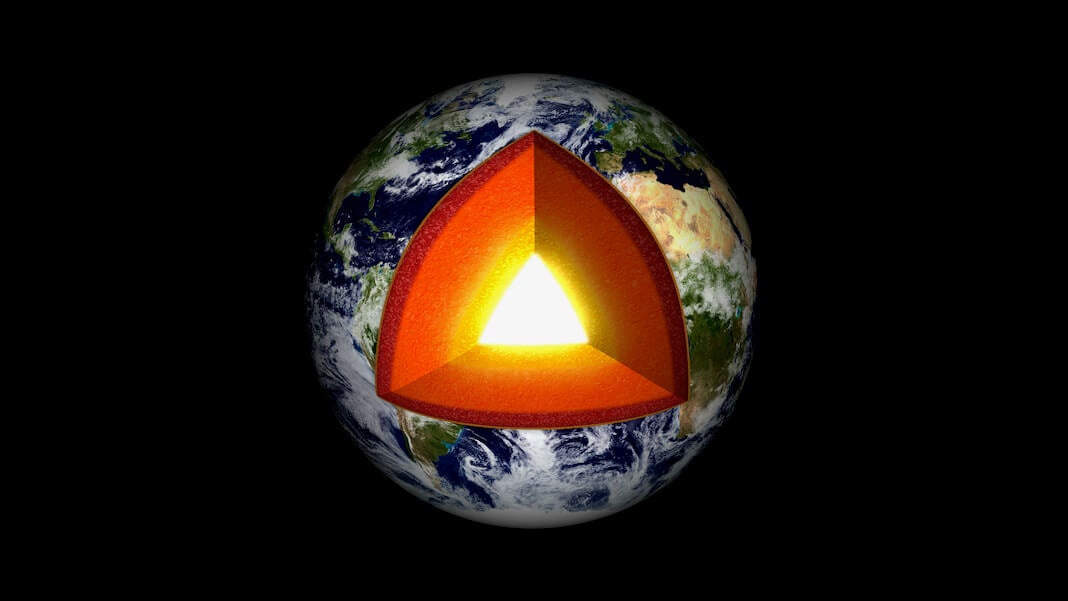| |
 Posted Feb 21, 2022, 7:04 PM
Posted Feb 21, 2022, 7:04 PM
|
 |
Registered User
|
|
Join Date: Aug 2002
Location: Toronto
Posts: 52,200
|
|
|
Startup Will Drill 12 Miles Into Earth’s Crust to Tap the Boundless Energy Below
Startup Will Drill 12 Miles Into Earth’s Crust to Tap the Boundless Energy Below
Feb 14, 2022
By Jason Dorrier
Read More: https://singularityhub.com/2022/02/1...GW8mpxad1Yy5Po
Quote:
.....
The core of our planet is hotter than the surface of the sun, all we have to do is drill deep enough to liberate some of its heat. At least, that’s the dream Quaise Energy is pitching, and the startup, spun out of MIT in 2018, recently secured $40 million in new funding to go after it. The big idea? Swap out traditional drill bits for millimeter-wave beams of light to vaporize rock instead of crushing it. These contactless drills could bore holes as deep as 12 miles into the Earth’s crust where the rock reaches temperatures upwards of 700 degrees Fahrenheit. Water goes down the hole, is converted to supercritical steam, and shoots back to the surface to drive standard turbines and produce electricity to feed the grid.
- “Today we have an access problem,” Quaise cofounder and CEO Carlos Araque told IEEE Spectrum in 2020. “The promise is that, if we could drill 10 to 20 km deep, we’d basically have access to an infinite source of energy.” It’s a compelling elevator pitch, and Quaise is built on promising foundations with an MIT origin story. But the startup still needs to prove its experimental tech works outside the lab and then solve the kinds of problems that only become relevant when dealing with scalding rock under immense pressure. More on that in a moment. First, a little context. — Enhanced geothermal systems (EGS) drill into hot rock with fewer naturally occurring cracks, fissures, and water. They then split the rock with high-pressure fluids, a technology borrowed from the oil and gas industry, where it’s known as “fracking” and pump in water to liberate the heat. Of course, fracking has some baggage, but EGS proponents stress there are notable differences. The fluids used for EGS are safer and pose less risk of polluting groundwater. The chances of inducing seismic activity are also lower, as EGS makes use of smaller fractures in the rock and uses less pressure compared to the recovery of oil and gas in shale.
- By drilling deeper, the startup will hit rock at higher temperatures so hot, in fact, that they can produce supercritical water, a fourth phase of water that’s neither liquid nor gas and has a few special properties. Supercritical water, for example, holds 4 to 10 times as much energy per unit mass and doubles its conversion to electricity. “Not only do you get more energy out of your well,” Eric Ingersoll, a clean energy analyst at LucidCatalyst told Vox, “you get more electricity out of that energy.” — It’s worth noting that Quaise is targeting temperature, not depth, according to Araque. In some parts of the world, like Iceland, rock hits the requisite temperatures three to five miles below the surface; but elsewhere those temps are only found 12 miles underground. “We want geothermal to be viable no matter where you are in the world, and for that you need to go deeper,” Araque told the Power Podcast. “20 kilometers, 12 miles, will pretty much get you 95 percent of the population of the world.” So, Quaise’s first and most crucial challenge is drilling deep enough. And that won’t be an easy task.
- The deeper you drill, the hotter the rock, this is a blessing and a curse. Using conventional technology, there’s a point past which it just isn’t practical to go deeper, according to Araque. One problem is your electronics melt. Worse, drill bits get torn up by the temperatures and hard rock. To replace a drill bit at those depths, you might spend a week to pull it up, a couple hours to replace it, and another week to push it back down. To solve the problem, the idea, and it’s not a new one, is to go contactless. — MIT’s Paul Woskov, whose research is the bedrock of Quaise’s approach, spent a decade proving out the physics involved. The system will use a beam of millimeter-wave energy, an electromagnetic frequency in the territory of microwaves generated by a gyrotron on the surface. The microwave beam shoots down the drill hole alongside a gas, nitrogen, air, or argon and evaporates layers of rock deep in the Earth. Then the gas binds and carries the vaporized rock back up to the surface like a plume of volcanic ash. — The team is using investments and grants, a total of $63 million to scale up to blasting first rock in the field in the western US in 2024.
.....
|

__________________
ASDFGHJK
|
|
|



